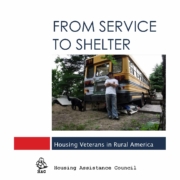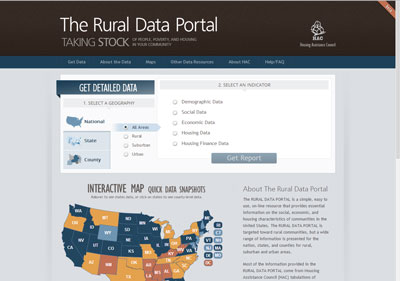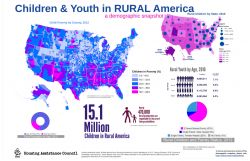HAC News: May 28, 2014
HAC News Formats. pdf
May 28, 2014
Vol. 43, No. 11
• USDA funding bills advance without major cuts • House committee approves FY15 T-HUD bill • Senate committee passes housing finance reform bill • Donovan nominated for OMB, Castro for HUD • Section 538 guarantees for rental housing loans are available • Lead hazard funding NOFA issued • USDA offers Intermediary Relending Program funds • HUD allows alternative accessibility standard • HUD allows alternative accessibility standard • Housing counseling pilot proposed by FHA • 2014 OMB Circular A-133 Compliance Supplement available • National Standard for Healthy Housing released • Research briefs link housing with education, employment, health, and other outcomes • Advocates’ Guide to Housing and Community Development Policy available online and in print • Draft handbook for Section 502 guaranteed loans posted • Homelessness decreased slightly from 2012 to 2013, research finds • Rural Data Portal updated with 2008-2012 ACS Data
May 28, 2014
Vol. 43, No. 11
USDA FUNDING BILLS ADVANCE WITHOUT MAJOR CUTS. The House Agriculture Appropriations Subcommittee passed its FY15 agriculture appropriations bill on May 20, and the full House committee will consider the measure on May 29. The full Senate Appropriations Committee approved its version, S. 2389, on May 22. Both bills reject many of the Administration’s budget proposals and retain funding for Section 502 direct loans, Section 523 self-help, and the capacity-building Rural Community Development Initiative. Neither house adopted the Administration’s request for minimum rents. Both bills include language prohibiting renewal of Section 521 Rental Assistance contracts that use up their funding before their full 12-month terms. The House bill supports expansion of the demonstration packaging program for Section 502 direct loans, while the Senate bill is silent on the matter.[tdborder][/tdborder]
|
USDA Rural Dev. Prog. |
FY13 |
FY14 |
FY15 |
FY15 House Subcmte. Bill |
FY15 Senate |
|
502 Single Fam. Direct |
$900 |
$900 |
$360 |
$1,042 |
$900 |
|
502 Single Family Guar. |
24,000 |
24,000 |
24,000 |
24,000 |
24,000 |
|
504 VLI Repair Loans |
28 |
26.3 |
26.3 |
26.4 |
26.3 |
|
504 VLI Repair Grants |
29.5 |
28.7 |
25 |
27 |
28.7 |
|
515 Rental Hsg. Direct Lns. |
31.3 |
28.4 |
28.4 |
28.3 |
28.4 |
|
514 Farm Labor Hsg. Lns. |
20.8 |
23.9 |
23.9 |
23.6 |
23.8 |
|
516 Farm Labor Hsg. Grts. |
7.1 |
8.3 |
8.3 |
8.3 |
8.3 |
|
521 Rental Assistanceb |
907.1 |
1,110 |
1,089 |
1,089 |
1,094 |
|
523 Self-Help TA |
30 |
25 |
10 |
30 |
25 |
|
533 Hsg. Prsrv. Grants |
3.6 |
3.5 |
0 |
0 |
3.5 |
|
538 Rental Hsg. Guar. |
150 |
150 |
150 |
150 |
150 |
|
Rental Prsrv. Demo. (MPR) |
17.8 |
20 |
20 |
20 |
20 |
|
Rental Prsrv. Revlg. Lns. |
0 |
0 |
0 |
0 |
0 |
|
542 Rural Hsg. Vouchers |
10 |
12.6 |
8 |
8 |
8 |
|
Rural Cmnty. Dev’t Init. |
6.1 |
6 |
0 |
5 |
6 |
|
a. Figures shown do not include 5% sequester or 2.5% across the board cut. b. None of the FY15 documents propose RA setasides for preservation or for new Section 514/516 housing. The final FY13 appropriation included a $3 million 514/516 setaside, and the final FY14 appropriation has no setasides. |
|||||
HOUSE COMMITTEE APPROVES FY15 T-HUD BILL. On May 21 the full House Appropriations Committee passed the Transportation-HUD spending bill as reported by its T-HUD subcommittee and summarized in the May 14 HAC News. The Senate subcommittee is expected to consider its bill on June 3.
SENATE COMMITTEE PASSES HOUSING FINANCE REFORM BILL. S. 1217, the Johnson-Crapo Housing Finance Reform and Taxpayer Protection Act, was approved by the Senate Committee on Banking, Housing and Urban Affairs on May 15. The full Senate is not expected to vote on the bill, however, and it has not been introduced in the House. It is likely to provide a starting point for finance reform efforts in the next Congress.
DONOVAN NOMINATED FOR OMB, CASTRO FOR HUD. President Obama has nominated HUD Secretary Shaun Donovan to head the Office of Management and Budget, and San Antonio Mayor Julián Castro to replace Donovan at HUD. Both positions require Senate confirmation.
SECTION 538 GUARANTEES FOR RENTAL HOUSING LOANS ARE AVAILABLE. Funds can be used for new construction or acquisition with rehabilitation of affordable rural rental housing, including USDA-financed properties. Applications are reviewed on a rolling basis. Contact Monica Cole, USDA, 202-720-1251.
LEAD HAZARD FUNDING NOFA ISSUED. States, local governments, and tribes can apply by June 27 for HUD’s Lead-Based Paint Hazard Control Grants or Lead Hazard Reduction Demonstration Grants. Contact Michelle Miller, HUD, 202-402-5769.
USDA OFFERS INTERMEDIARY RELENDING PROGRAM FUNDS. Intermediaries that relend funds for business facilities and community developments in rural areas can apply by June 30 for IRP loans. Contact a USDA RD state office.
HUD ALLOWS ALTERNATIVE ACCESSIBILITY STANDARD. HUD funding recipients may comply with accessibility requirements by using either the 2010 Americans with Disabilities Act Standards for Accessible Design (with specific exceptions) or the Uniform Federal Accessibility Standards. This instruction is effective from May 23 until HUD completes an update of its accessibility regulations. Contact Cheryl Kent, HUD, 202-402-7058.
HOUSING COUNSELING PILOT PROPOSED BY FHA. The Federal Housing Administration requests comments by July 14 on a four-year housing counseling pilot to be called Homeowners Armed With Knowledge (HAWK) for New Homebuyers. In exchange for participating, first-time homebuyers will get “substantial reductions” in the pricing of their FHA insurance. Email questions to housing.counseling@hud.gov with “HAWK Notice Question” in the subject line. Contact Arlene Nunes, HUD, 202-402-2532.
2014 OMB CIRCULAR A-133 COMPLIANCE SUPPLEMENT AVAILABLE. Comments on this year’s supplement are due October 31. Contact a federal awarding agency.
NATIONAL STANDARD FOR HEALTHY HOUSING RELEASED. The National Center for Healthy Housing and the American Public Health Association have issued a standard intended to be used by property owners, elected officials, code agency staff, and others. Written in code language for easy adoption, the document covers existing owner-occupied and rental housing. Contact NCHH, info@nchh.org, 410-992-0712.
RESEARCH BRIEFS LINK HOUSING WITH EDUCATION, EMPLOYMENT, HEALTH, AND OTHER OUTCOMES. Produced by the John D. and Catherine T. MacArthur Foundation’s “How Housing Matters to Families and Communities Initiative, “ the briefs present findings from longer research pieces and are intended to help inform policy discussions.
ADVOCATES’ GUIDE TO HOUSING AND COMMUNITY DEVELOPMENT POLICY AVAILABLE ONLINE AND IN PRINT. The 2014 guide published by the National Low Income Housing Coalition provides brief overviews of housing programs and advocacy tools. To purchase a print copy, contact Christina Reyes, 202-662-1530 x224.
DRAFT HANDBOOK FOR SECTION 502 GUARANTEED LOANS POSTED. The handbook accompanies the program’s interim final rule, which was issued in December 2013 and will take effect on September 1, 2014. Contact USDA RD’s Single Family Housing Guaranteed Loan Division, 202-720-1452.
HOMELESSNESS DECREASED SLIGHTLY FROM 2012 TO 2013, RESEARCH FINDS. Nevertheless, nationally there are about 184,000 more homeless persons than beds available to assist them, according to the National Alliance to End Homelessness’s State of Homelessness in America report for 2014.
|
HAC’s RURAL DATA PORTAL now features the most recent 2008-2012 American Community Survey (ACS) data. Visit www.ruraldataportal.org to start “taking stock” of your community today. The RURAL DATA PORTAL is a simple, easy to use, on-line resource that provides essential information on the social, economic, and housing characteristics of communities in the United States. The RURAL DATA PORTAL is targeted toward rural communities, but a wide range of information is presented for the nation, states, and counties for rural, suburban, and urban areas. |

 Housing Assistance Council
Housing Assistance Council



